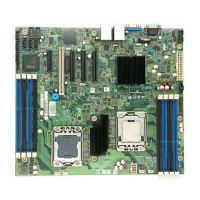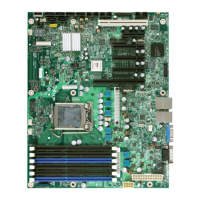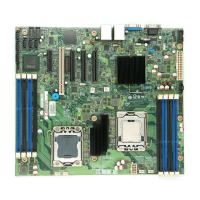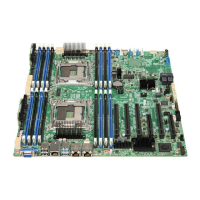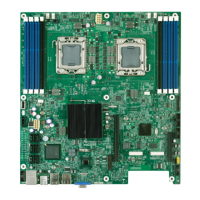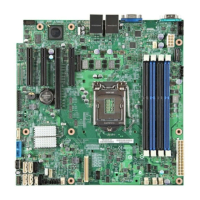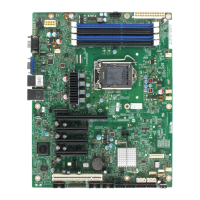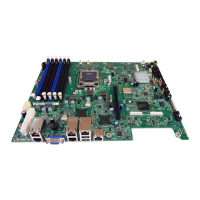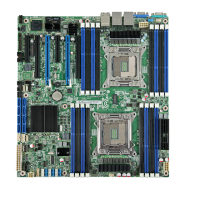BIOS Architecture Intel® Server Board SE7520BD2 Technical Product Specification
58 Revision 1.3
3.5 Flash Architecture and Flash Update Utility
The flash ROM contains system initialization routines, the BIOS Setup Utility, and runtime
support routines. The exact layout is subject to change, as determined by Intel. A 64-KB user
block is available for user ROM code or custom logos. The flash ROM also contains initialization
code in compressed form for onboard peripherals, such as SCSI, NIC and video controllers. It
also contains support for the rolling single-boot BIOS update feature.
The complete ROM is visible, starting at physical address 4 GB minus the size of the flash ROM
device. The Flash Memory Update utility loads the BIOS image minus the recovery block to the
secondary flash partition, and notifies the BIOS that this image should be used on the next
system re-boot. Because of shadowing, none of the flash blocks are visible at the aliased
addresses below 1 MB.
A 16-KB parameter block in the flash ROM is dedicated to storing configuration data that
controls the system configuration (ESCD). Application software must use standard APIs to
access these areas; application software cannot access the data directly.
3.5.1 Rolling BIOS and On-line Updates
The Online Update nomenclature refers to the ability to update the BIOS while the server is
online and in operation, as opposed to taking the server out of operation while performing a
BIOS update. The rolling BIOS nomenclature refers to the capability of having two copies of
BIOS: the current one in use, and a second BIOS to which an updated BIOS version can be
written. When ready, the system can roll forward to the new BIOS. In case of a failure with the
new version, the system can roll back to the previous version.
The BIOS relies on specialized hardware and additional flash space to accomplish online
update/rolling of the BIOS. To this end, the flash is divided into two partitions, primary and
secondary. The active partition from which the system boots shall be referred to as the primary
partition. The AMI FLASH update suite and Intel Online updates preserve the existing BIOS
image on the primary partition. BIOS updates are diverted to the secondary partition. After the
update is complete, a notification flag is set. During the subsequent boot following the BIOS
update, the system continues to attempt to boot from the primary BIOS partition. On determining
that a BIOS update occurred in the previous boot, the system then attempts to boot from the
new BIOS. If a failure happens while booting to the new BIOS, the specialized hardware on the
system switches back to the primary BIOS partition, thus affecting a “Roll Back”.
The rolling one-boot update feature applies to all the update mechanisms discussed in the
following sections.
3.5.2 Flash Update Utility
Server platforms support a DOS-based firmware update utility. This utility loads a fresh copy of
the BIOS into the flash ROM.
The BIOS update may affect the following items:
• The system BIOS, including the recovery code, setup utility and strings
• Onboard video BIOS, SCSI BIOS, and other option ROMS for the devices embedded on
the server board
• OEM binary area
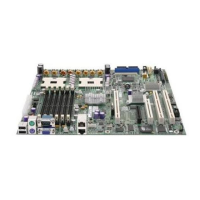
